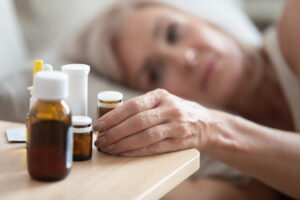 Hormone replacement can be given orally, transdermal (the patch), or vaginally. The goal is the SMALLEST amount that manages symptoms and prevents bone loss. When you are younger, your estrogen levels may be 70-300 mcg. After menopause your levels are usually less than 25 mcg. There are negative things to taking hormones: moodiness, bleeding, breast tenderness, bloating. It is unclear when you should stop therapy.
Hormone replacement can be given orally, transdermal (the patch), or vaginally. The goal is the SMALLEST amount that manages symptoms and prevents bone loss. When you are younger, your estrogen levels may be 70-300 mcg. After menopause your levels are usually less than 25 mcg. There are negative things to taking hormones: moodiness, bleeding, breast tenderness, bloating. It is unclear when you should stop therapy.
Remember, I AM NOT A GYNECOLOGIST. I am a plastic surgeon just sharing some of the data I have found in my deep dive into menopausal changes I see in my practice, and if there is some other insights I should be sharing with my patients in this oh-so-lovely new chapter of womanhood.
ORAL
- Goes to the liver first, where converted to estrone
- Higher blood clot risk
- Binds more testosterone, so may have more negative effect on libido
- Lowers cholesterol
- Many different options: Estradiol, CEE (Conjugated equine estrogen), CE, Estropipate
TRANSDERMAL
- No increase in rate of blood clots and stroke
- Goes directly into bloodstream
- It is estradiol
- More steady level
- Less likely to cause high blood pressure
- How to? apply to abdomen or back, changed 1-2x /week
- Dose? .014 mg – 0.1 mg/day (rule of thumb: 0.05 mg patch–> blood level of 50mcg, 0.0375 –>37.5 mcg)
- Other than patches, you can use gels, sprays, and vaginal ring
VAGINAL
- Goes directly into bloodstream
- Effect tends to stay local, particularly with longer use and thickening of vaginal wall so less is absorbed.
The progesterone question. Do you need it to prevent build up of the uterine lining? Some studies seemed to indicate it was a culprit in the higher breast cancer risk, or maybe only if used for a certain amount of time.
- Progestins can be derived from testosterone, spirinolactone.
- Can be “given” by having an IUD with progesterone
- Don’t affect blood clotting
- May help with hot flashes, osteoporosis, sleep, depression
- May have mood effects and bleeding
- Can’t be given through a cream on the skin
If you don’t want progesterone, CEE/BZA is an option. Bazedoxifene is a selective estrogen receptor modulator. The thought is that the two things “cancel” the bad stuff. CEE cancels the BZA on hot flashes, and the BZA cancels the CEE effect on uterine lining and breast density. This may be the best choice for women with dense breasts. The estrogen content is 0.45 mg. This is relatively newer, so there is ongoing research.
What about bioidenticals? or compounded creams?
- Bioidenticals are in the herbal and supplement category. Buyer beware. The FDA does not monitor these, and they are allowed to make unfounded claims, and many do not contain what or the amounts of what they say they do.
- Compounded creams are made in a pharmacy. The issue with these may be consistency. There may be great pharmacies which give you exactly what you think you are getting, and others which just …. don’t.
- There is nothing “better” about getting “natural” bioidenticals. Plants do not have estrogen you can use, and remember bioidenticals are in the food category, NOT the drug category monitored by the FDA. The estrogen made by pharmaceutical companies comes from yams, but is processed to make it into the usable estrogen.
So be wary if you are getting “natural” remedies. It is hard to know what you are actually getting. And if you have any kind of risks (breast cancer, clotting, heart dieases, osteoporosis), you should know what you are actually taking.
